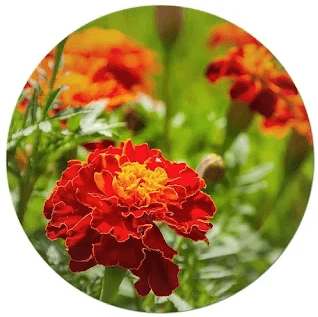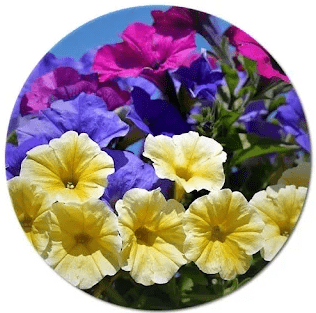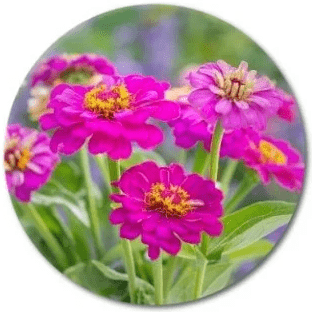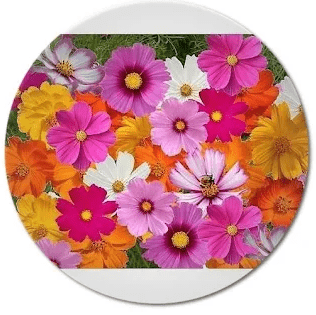Types of seasonal annual flowers, Seasonal flower varieties are divided into different types among themselves. For example, there are annual seasonal flowers and perennial seasonal flowers. Annual flowers develop, flower, set seed and die within one season immediately after sowing. They are sown again the following year. Annual flowers are also called summer flowers because they usually bloom in midsummer. There are also species that bloom in spring and fall. Annual flowers require the cost of sowing seeds and planting seedlings every year. However, they are popular because they have bright, showy and fragrant flowers in a wide variety of colors. They are especially effective in formal borders and cushions, and in pots on balcony edges when planted as a single species.
There are numerous annual flowering plants that are popular for seasonal color and are commonly grown as annuals in gardens and containers. Annuals complete their life cycle within a single growing season, germinating, flowering, setting seed, and then dying. Here are some popular annual flowering plants that are often chosen for their vibrant blooms and ease of cultivation:
- Marigold (Tagetes spp.): Marigolds are known for their cheerful, orange and yellow flowers. They are easy to grow and are often used for border plantings.
- Petunia (Petunia spp.): Petunias come in various colors and are prized for their trumpet-shaped flowers. They are popular in hanging baskets and containers.
- Zinnia (Zinnia elegans): Zinnias offer a wide range of colors and come in various shapes and sizes. They are excellent for adding bold splashes of color to gardens.
- Cosmos (Cosmos bipinnatus): Cosmos have feathery foliage and produce daisy-like flowers in shades of pink, white, and purple. They are great for attracting pollinators.
- Snapdragon (Antirrhinum majus): Snapdragons are known for their distinctive, vertical flower spikes. They come in a variety of colors and are commonly used in flower beds.
- Alyssum (Lobularia maritima): Alyssum forms low mounds covered with clusters of small, fragrant flowers. It is often used as a ground cover or in containers.
- Sunflower (Helianthus annuus): Sunflowers are tall and vibrant, with large yellow blooms. They are excellent for adding height and a cheerful atmosphere to gardens.
- Impatiens (Impatiens walleriana): Impatiens, also known as “Busy Lizzies,” come in various colors and are valued for their ability to thrive in shaded areas.
- Geranium (Pelargonium spp.): Pelargoniums, often referred to as geraniums, are popular annuals with colorful blooms. They are commonly grown in pots and hanging baskets.
- Nasturtium (Tropaeolum majus): Nasturtiums have round, vibrant flowers and attractive foliage. They are often used in both garden beds and containers.
- Dahlia (Dahlia spp.): Dahlias produce large, showy flowers in a wide range of colors. They are commonly grown for their impressive blooms.
- Celosia (Celosia argentea): Celosia, also known as cockscomb, has distinctive, feathery flower heads. They are available in various colors and add a unique texture to gardens.

These are just a few examples, and there are many more annual flowers to choose from based on your preferences and local growing conditions. When planning a garden, consider factors such as sunlight, soil type, and water availability to ensure the success of your chosen annuals
What type of flower is an annual?
An annual flower is a type of plant that completes its entire life cycle—germination, growth, flowering, seed production, and death—within a single growing season. Unlike perennials, which live for multiple growing seasons, annuals typically sprout from seed, produce flowers, set seeds, and then die all within one year.
Key characteristics of annual flowers include:

- Quick Growth: Annuals tend to grow rapidly, producing leaves, stems, and flowers in a relatively short period.
- Continuous Blooming: Many annuals bloom continuously throughout the growing season, providing a prolonged display of color.
- Seed Production: Annuals produce seeds as part of their life cycle. These seeds can be collected for future planting.
- Variety of Shapes and Sizes: Annuals come in a wide variety of shapes, sizes, and colors, providing flexibility for garden design.
- Versatility: Annuals are often used to fill gaps in flower beds, provide seasonal color, or create temporary displays in containers.
Popular annual flowers include marigolds, petunias, zinnias, cosmos, sunflowers, impatiens, and snapdragons, among many others. Gardeners often choose annuals to add vibrant colors and variety to their gardens, and they may experiment with different annuals each year to create diverse and evolving displays.
It’s important to note that there are different categories of annuals. Some are considered “hardy” and can withstand cooler temperatures, while others are “tender” and are more susceptible to frost. Understanding the specific characteristics and growing conditions of the annuals you choose is essential for successful cultivation.
How are annuals classified?
Annuals are classified based on various factors, including their growth habit, life cycle, and environmental preferences. Here are some common classifications of annuals:
- Hardiness:
- Hardy Annuals: These are annual plants that can withstand cooler temperatures and can be planted outdoors early in the spring. They may even tolerate a light frost.
- Half-Hardy Annuals: These annuals are more sensitive to frost and are usually planted outdoors after the last frost date in spring.
- Tender Annuals: These annuals are sensitive to cold temperatures and are typically planted after the danger of frost has passed.
- Life Cycle:
- True Annuals: Complete their entire life cycle—germination, flowering, seed production, and death—within one growing season.
- Biennials Treated as Annuals: Some plants classified as biennials can be grown as annuals in certain climates. They complete their life cycle in one growing season when planted from seed.
- Growth Habit:
- Upright Annuals: These annuals have a vertical or upright growth habit, and examples include marigolds and snapdragons.
- Trailing or Spreading Annuals: These annuals have a cascading or spreading growth habit and are often used in hanging baskets or as ground covers. Examples include petunias and sweet potato vines.
- Compact or Dwarf Annuals: These are smaller varieties suitable for container gardening or small spaces.
- Sunlight Requirements:
- Full Sun Annuals: These annuals thrive in direct sunlight and require at least 6-8 hours of sunlight per day. Examples include sunflowers and marigolds.
- Partial Sun or Shade Annuals: These annuals prefer some protection from the intense afternoon sun and are suitable for areas with filtered sunlight or partial shade. Examples include impatiens and begonias.
- Use in the Garden:
- Bedding Plants: Annuals often used for mass planting in flower beds or borders for a burst of seasonal color.
- Container Plants: Annuals suitable for growing in containers, pots, or hanging baskets.
- Cut Flowers: Annuals with long stems and attractive blooms, suitable for floral arrangements.

Understanding these classifications can help gardeners choose the right annuals for their specific growing conditions and design preferences. It’s important to consider factors such as climate, soil type, and sunlight availability when selecting and planting annuals.
What is the most popular annual flower?
Determining the “most popular” annual flower can vary based on region, personal preferences, and trends. However, some annual flowers are widely regarded as popular and commonly used in gardens, landscapes, and containers. One such example is the Petunia (Petunia spp.). Petunias are known for their vibrant and abundant blooms, and they are a favorite choice for many gardeners for several reasons:
- Versatility: Petunias come in a wide range of colors, including shades of pink, purple, red, white, and even multicolored varieties. This versatility allows them to fit into various color schemes and garden designs.
- Continuous Blooming: Many petunia varieties are prolific bloomers, providing a continuous display of flowers throughout the growing season. This quality makes them popular for adding color to gardens and containers.
- Adaptability: Petunias are adaptable to different growing conditions, including full sun to partial shade. They can thrive in flower beds, hanging baskets, and containers.
- Low Maintenance: Petunias are relatively easy to care for, making them suitable for both experienced and novice gardeners. Regular deadheading (removing spent blooms) can promote continuous flowering.
- Variety of Forms: Petunias are available in various forms, including grandiflora (large, showy flowers), multiflora (smaller, abundant flowers), and trailing or spreading varieties ideal for hanging baskets and containers.
Other popular annual flowers that are widely cultivated include:

- Marigold (Tagetes spp.): Known for their cheerful, orange and yellow blooms, marigolds are easy to grow and offer natural pest-repelling properties.
- Zinnia (Zinnia elegans): Zinnias come in various colors and are prized for their bold, daisy-like flowers. They are excellent for attracting pollinators.
- Impatiens (Impatiens walleriana): Impatiens, or “Busy Lizzies,” are valued for their ability to thrive in shaded areas and their continuous bloom.
- Cosmos (Cosmos bipinnatus): Cosmos have delicate, feathery foliage and produce colorful, daisy-like flowers.
While these are popular choices, the “most popular” annual flower can vary based on individual preferences and regional climate conditions. Gardeners often select annuals based on factors such as color preferences, growth habits, and specific gardening needs.
